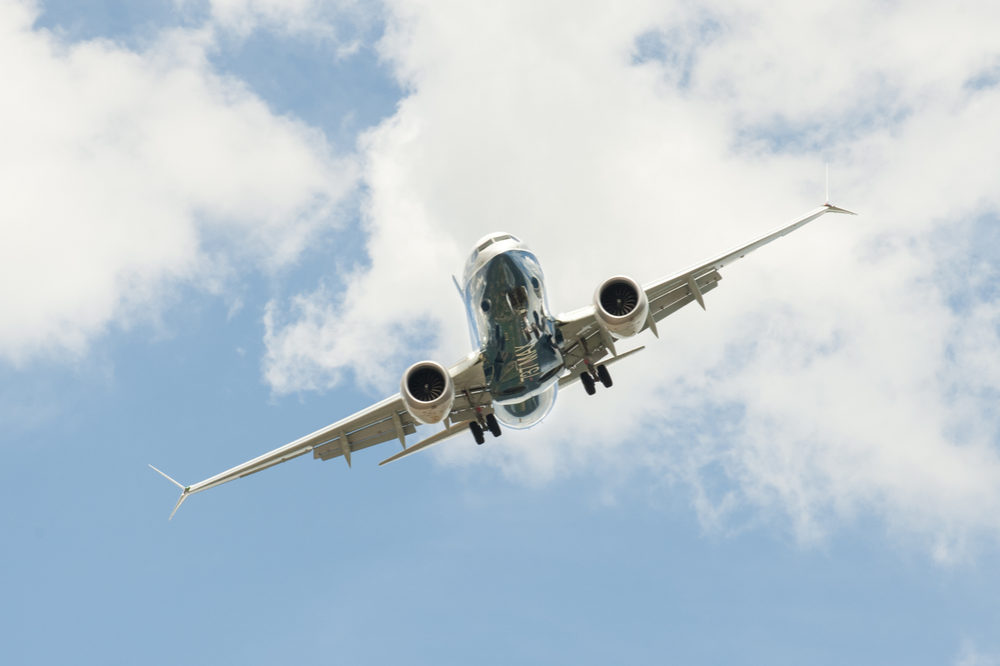Boeing 737 Max Grounded Worldwide Over Safety Concerns

Federal safety officials in the United States have now joined a growing number of nations worldwide, indicating that safety concerns require the grounding of all Boeing 737 MAX 8 and 9 airplanes, following two recent crashes and reports about other instances where pilots struggled to keep the plane in the air after take-off.
On Wednesday, the Federal Aviation Administration (FAA) issued an Emergency Order of Prohibition (PDF), barring Boeing from operating the planes in the U.S. and banning the plane from U.S. airspace.
The U.S. was the last major country to ground the planes following a crash of Ethiopian Airlines Flight 302 (RT302); a Boeing 737 MAX 8 that crashed on Sunday, only minutes into its flight, killing all 157 passengers and crew.

Did You Know?
Millions of Philips CPAP Machines Recalled
Philips DreamStation, CPAP and BiPAP machines sold in recent years may pose a risk of cancer, lung damage and other injuries.
Learn MoreThe accident appears to be disturbingly similar to the crash of Lion Air Flight 610 (JT610) out of Indonesia in October, which involved the same new model plane, and involved reports of pilots fighting to keep the plane level.
According to air traffic reports, the pilot of Flight 610 fought 26 times to level off the airplane, but the Boeing anti-stall system repeatedly pushed the nose down, ultimately causing the plane to crash into the Java Sea only 11 minutes into the flight, killing all 189 passengers and crew members.
In grounding the Boeing 737 Max fleet, the FAA indicated that it has received new telemetry data, which suggests that the flight characteristics of the Ethiopian crash were similar to those of the Lion Air accident.
“On March 13, 2019, the investigation of the ET302 crash developed new information from the wreckage concerning the aircraft’s configuration just after takeoff that, taken together with newly refined data from satellite-based tracking of the aircraft’s flight path, indicates some similarities between the ET302 and JT610 accidents that warrant further investigation of the possibility of a shared cause for the two incidents that needs to be better understood and addressed,” the FAA order states. “Accordingly, the Acting Administrator is ordering all Boeing 737 MAX airplanes to be grounded pending further investigation.”
The order went into effect immediately, only allowing those affected 737s in flight to land.
Following a cascade of similar groundings, which started in China, then spread to the European Union, Canada and every other major country in the world, Boeing announced that it was grounding its entire global fleet of 371 Boeing 737 MAX aircraft. Boeing issued a statement yesterday saying it had recommended the grounding to the FAA.
“We are supporting this proactive step out of an abundance of caution. Safety is a core value at Boeing for as long as we have been building airplanes; and it always will be,” Boeing CEO and Chairman, Dennis Muilenburg, said in the statement. “There is no greater priority for our company and our industry. We are doing everything we can to understand the cause of the accidents in partnership with the investigators, deploy safety enhancements and help ensure this does not happen again.”
The Boeing 737 Max plane accidents have raised questions not just about the safety of the aircraft design, but how forthcoming Boeing was about potential problems and necessary pilot training.
Following the Lion Air Boeing crash, the Indonesia’s National Transportation Safety Committee (KNKT) released a preliminary safety report indicating the Boeing 737 MAX was not airworthy, after finding the plane’s Angle of Attack (AOA) sensors malfunctioned, wrongly telling the automated systems that the plane was in a stall because the nose was too high. As a result, pilots may continue to pitch the nose downward or the automatic system may forcibly pitch the nose down, causing the plane to nose-dive.
Following the Indonesian crash in October, the Federal Aviation Administration (FAA) issued an emergency air worthiness directive, which advised all pilots operating a Boeing Model 737 Max that the AOA sensors may produce erroneous readings and cause the plane to abruptly dive, increasing the risk of a crash.
Boeing indicated on Monday that it is still working on developing a software upgrade that will be pushed out to the entire 737 MAX 8 fleet in the upcoming weeks. The software upgrade will include a development to the flight control module that is anticipated to correct the AOA issues.
Although there are apparent similarities between the two Boeing crashes, the investigation of the Ethiopian Airlines crash has just begun and the cause of the crash has not yet been determined, according to the FAA. Officials have reported the plane’s two black boxes have been recovered for review.
Get more articles like this sent directly to your inbox.
"*" indicates required fields





0 Comments